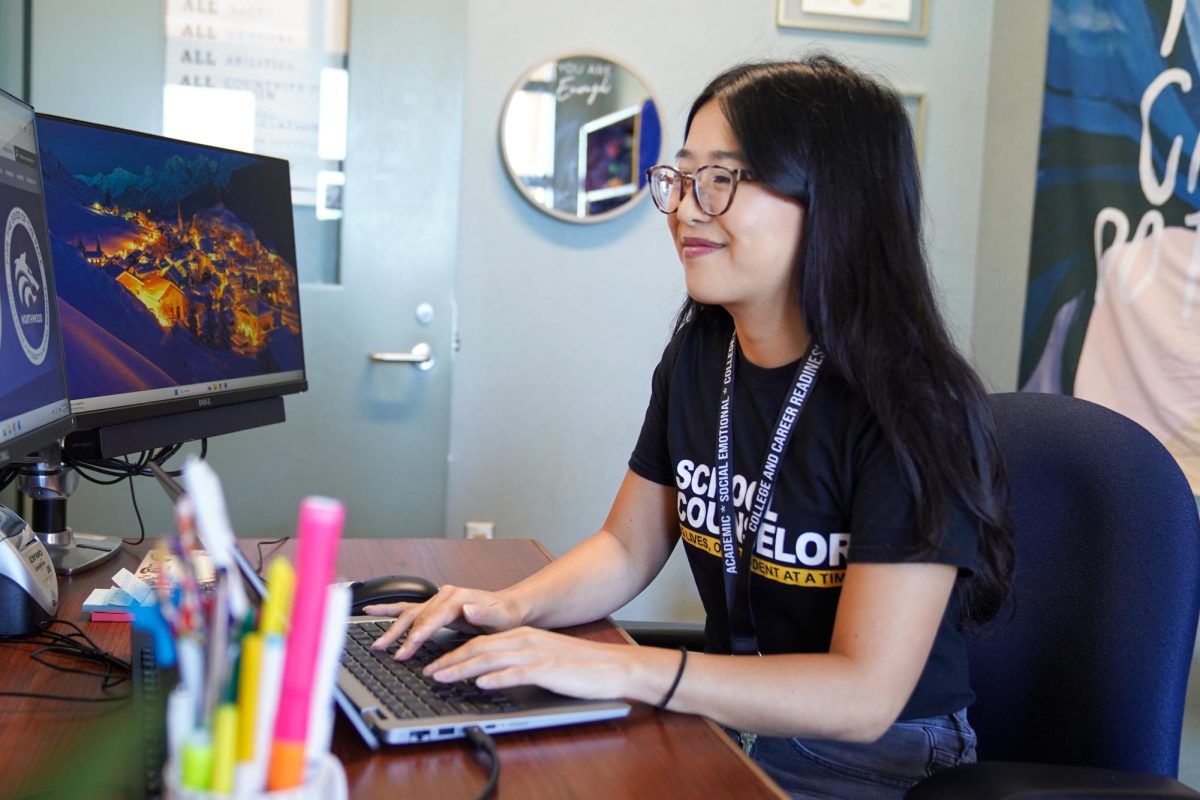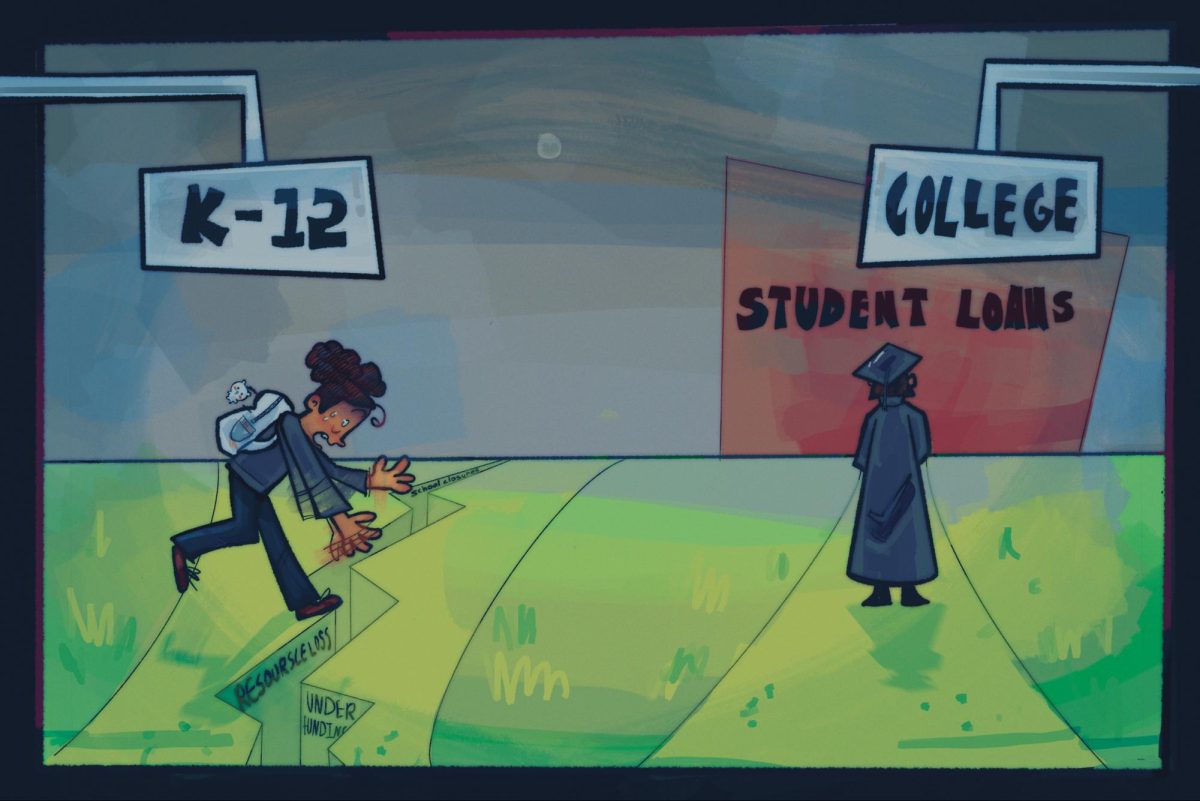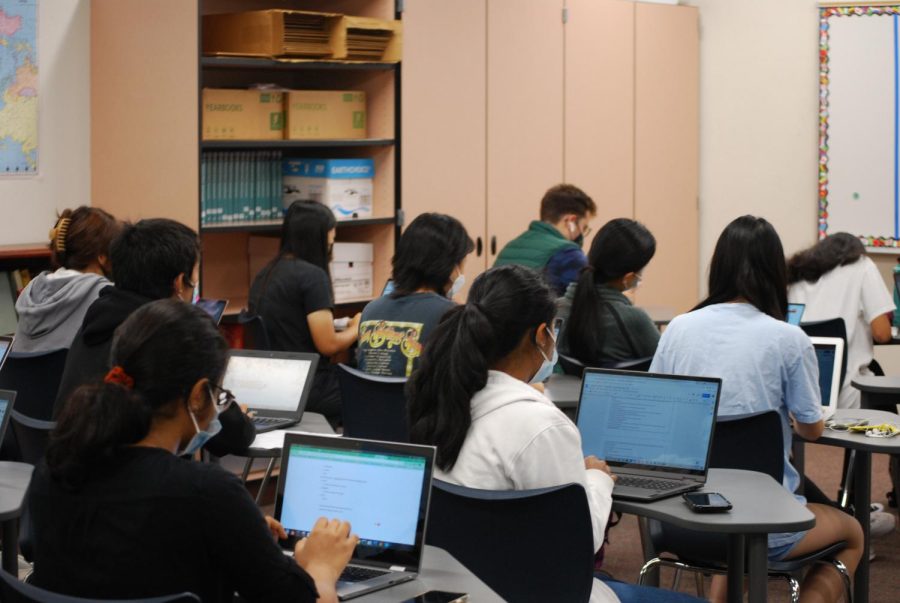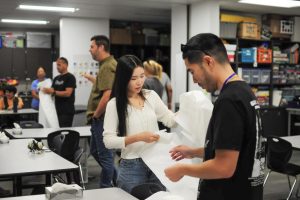Why the future of education is rightfully based in technology
GOING DIGITAL: Due to its convenience, education is becoming more digitalized.
September 29, 2021
It seems like it was only yesterday that English teachers would bring out the Chromebook cart for the first time in weeks, providing a one-period relief from physical worksheets and an abundance of eraser shavings. Yet, in just two years, it’s become the norm for students to pull out a laptop in nearly all their classes, with hardly any notebooks or pencils in sight. Not many people would argue that education is moving towards the digital age, and while there have been mixed reactions to this trend from students and staff alike, the potential of increased technology in the classroom far outweighs its detriments.
The shift to a virtual learning environment in April 2020 was sudden but necessary, thanks to the physical restrictions created in response to the COVID-19 pandemic. From the implementation of Irvine Virtual Academy to the quick acceptance of Zoom, IUSD teachers embraced virtual learning as the only viable option. However, the shift to virtual learning hastened the transition to a widely digital learning system, which some experts view as promising.
“Forced virtual schooling forces state public school systems to create virtual curricula, which is then available to non-local, non-physical attending students,” Sam S. Adams, a senior research scientist at RTI International, said in a Pew Research article. “Competition for quality and the digital nature of the content transforms the education system into a hybrid physical-virtual system where access and quality of content and instructors are better distributed.”
Indeed, many teachers across the United States have already stepped up their use of technology in classrooms. According to a study conducted by MidAmerica Nazarene University, roughly 73% of teachers have students using tablets or laptops daily, and 82% of teachers view technology as a great way to enhance learning and teaching.
Curriculum that successfully integrates technology into traditional environments can enable quick access to information, improve personalized learning due to innovative software, increase collaboration through applications like Google Docs or Jamboard and raise levels of engagement due to interactive activities like virtual tours, Gizmo simulations or PearDeck slides.
Software programs that specifically aid students with learning disabilities can also be utilized to ensure that each student receives proper education regardless of their circumstances. Finally, early exposure to technology will also better prepare students for the workforce after college, which is predicted to be more heavily automated and technology-based in the near future (for example, the global machine learning market is expected to reach $20.83 billion in 2024 according to Forbes, up from around $8 billion in 2022).
Unfortunately, these benefits do not come without dangers; opponents to digital education often point out the risks of inequity that are exacerbated by the implementation of technology. This is a valid concern; according to a 2021 report from the Programme for International Student Assessment, nearly all 15-year olds from privileged backgrounds had a computer available for school, whereas almost 25% of such students from underprivileged backgrounds did not. Similar trends have been observed with internet access. However, as education continues to trend towards the digital side, policies implemented by both the state government and districts can help address this issue. IUSD has already been allowing students to borrow Chromebooks for free, and other school districts have included initiatives such as having buses transport mobile hotspots to expand internet access.
If anything, the concerns over inequity are excellent demonstrations of why technology is perhaps best-served as a tool to enhance traditional learning, rather than replace it. Completely virtual environments like Zoom not only amplify inequity but have greater risk of being affected by technological mishaps, like the IUSD outage on Sept. 7. They’re also relatively unpopular with students; a Stanford study comparing online learning to in-person learning observed that while high-performing students in in-person environments performed similarly online, lower-performing students performed significantly worse online than in traditional learning.
“It is not surprising that in person courses are, on average, more effective,” Brown University professor Susanna Loeb said in an interview for Education Week. “Being in person with teachers and other students creates social pressures and benefits that can help motivate students.”
Irvine’s education system is constantly evolving, with a welcome shift towards more digital education and increased technology in the classroom. The COVID-19 pandemic forced unprepared teachers to hastily transition to online lessons, and IUSD’s choice to make grades credit-based rather than letter-based in Spring 2020 was indicative that the virtual lessons were not ideal. But the district and individual teachers worked to heavily improve technology-based learning for next year and succeeded, demonstrating that IUSD has the potential and means to make education more digitized for students. While it likely won’t be perfect on its first try, digital learning is certainly the future of education, and one that should be embraced by all.


























































